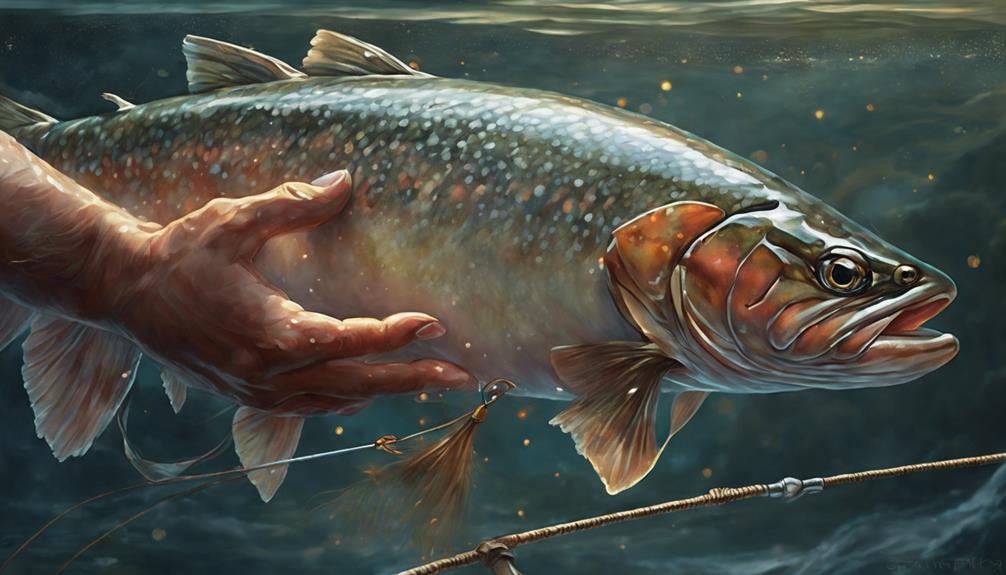When it comes to mastering trout hand lining, you know the saying, 'Patience is a virtue.' But what else do you need to become a pro at this method of fishing?
Well, imagine the satisfaction of reeling in a feisty trout using just your hands and a line. It's not as simple as it sounds, but with these seven expert tips, you'll be well on your way to becoming a master angler in no time.
Ready to take your trout hand lining skills to the next level?
Key Takeaways
- Choose a durable hand line with a comfortable grip for optimal control.
- Understand trout behavior for successful targeting in their preferred environments.
- Master casting techniques for natural bait presentation and minimal disturbance.
- Utilize proper bait selection and line control for effective trout hand lining.
Choosing the Right Hand Line
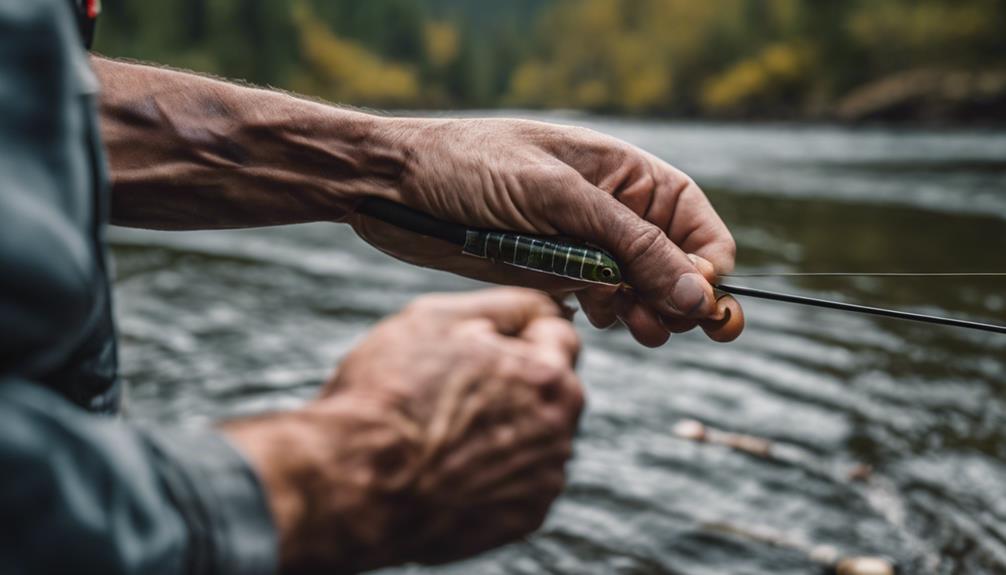
When gearing up for trout hand lining, make sure to pick a hand line that's both durable and lightweight for easy handling and maneuverability. The main line plays an important role in your setup, so opt for one that's strong enough to handle the fight of trout without risking breakage.
Additionally, consider adding a fluorocarbon leader to your setup. This transparent line back is less visible underwater, which can help prevent spooking the trout. A smooth line back will also reduce the chances of tangling or snagging, ensuring a more efficient fishing experience.
Choose a hand line with a comfortable grip to avoid fatigue during long fishing sessions and improve your overall control and handling.
Understanding Trout Behavior
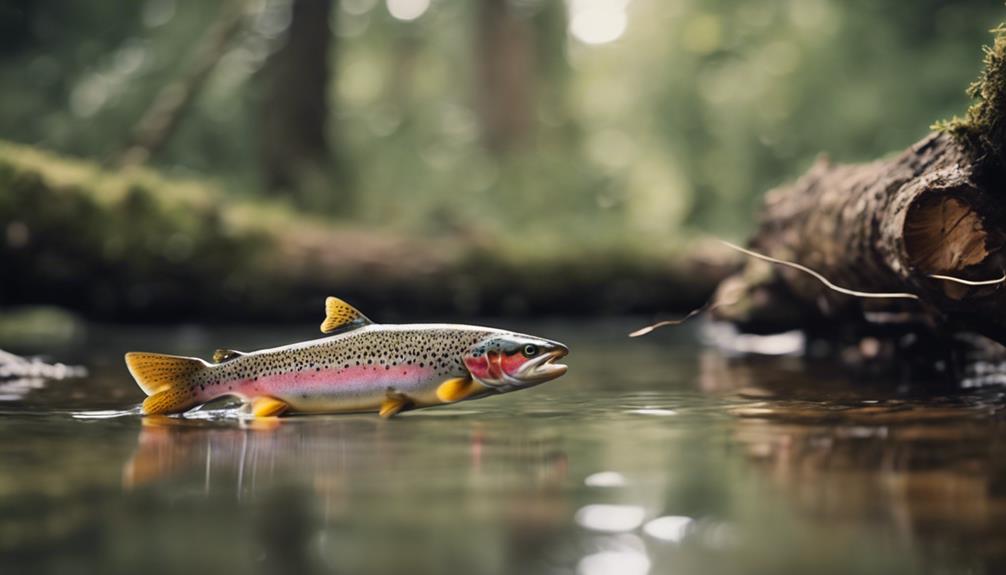
Trout behavior can be fascinating to observe, especially when you take into account their territorial nature and feeding preferences. Understanding trout behavior can greatly enhance your hand lining success. Here are some key points to help you grasp their behavior better:
- Trout are known to be territorial and will often stay in specific areas of a river or lake.
- They prefer cooler water temperatures and oxygen-rich environments.
- Trout are most active during low light conditions like early morning or late evening.
- They're opportunistic feeders, targeting insects, small fish, and other aquatic creatures.
- Changes in water clarity, temperature, and flow can influence where trout position themselves.
Perfecting Your Casting Technique
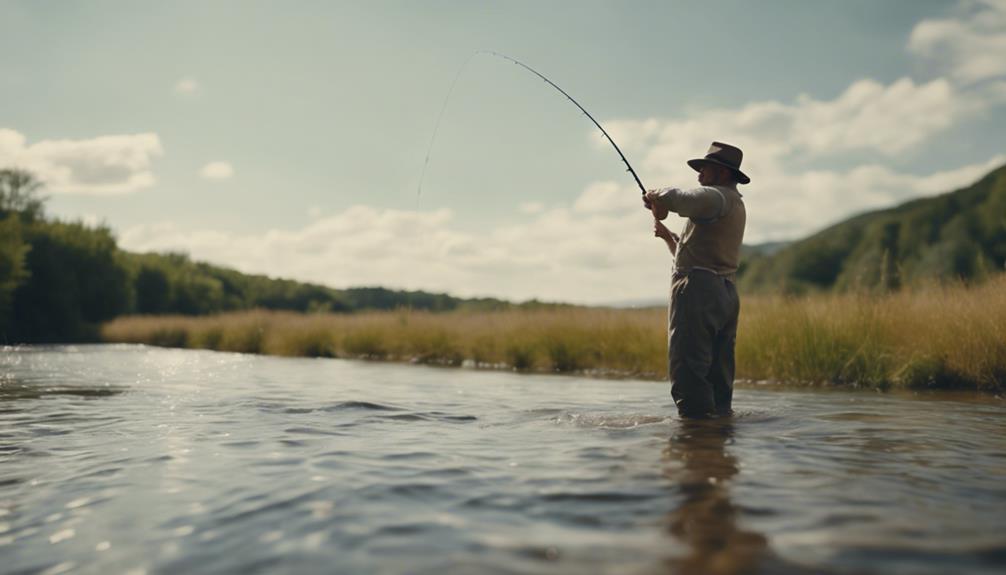
To improve your hand lining success, focus on refining your casting technique for a more natural and precise presentation to the trout. Pay attention to your casting angle and trajectory, ensuring your lure lands softly on the water surface.
Practice controlling the distance and accuracy of your casts, targeting specific areas where trout are likely to be. Experiment with different casting techniques like sidearm, overhand, and roll casts to adapt to varying fishing conditions.
Adjust your casting speed and power according to the weight of your lure and the distance you want to cover. Remember to minimize noise and disturbance during your casts to avoid spooking cautious trout in shallow waters.
Mastering these casting techniques will greatly enhance your hand lining experience.
Utilizing Proper Bait Selection
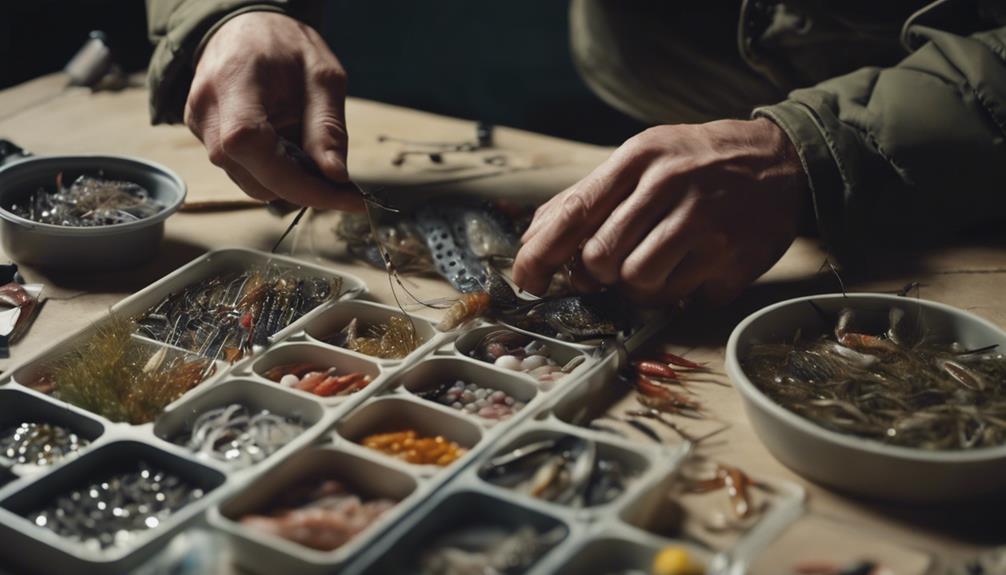
Refine your hand lining success by selecting the right bait options to entice trout effectively. When it comes to bait selection, there are a few key things to keep in mind:
- Choose the right bait: Nightcrawlers, salmon eggs, and power bait are great options.
- Consider the conditions: Tailor your bait choice based on water conditions and the trout's feeding habits.
- Use scented baits: Garlic or shrimp-infused baits can be excellent for attracting trout in murky waters.
- Experiment with presentations: Try floating bait rigs or bottom bouncing setups to see what works best.
- Know the regulations: Stay informed about local rules on bait usage to fish ethically.
Mastering bait selection is important for reeling in those trout successfully!
Mastering Line Control and Tension
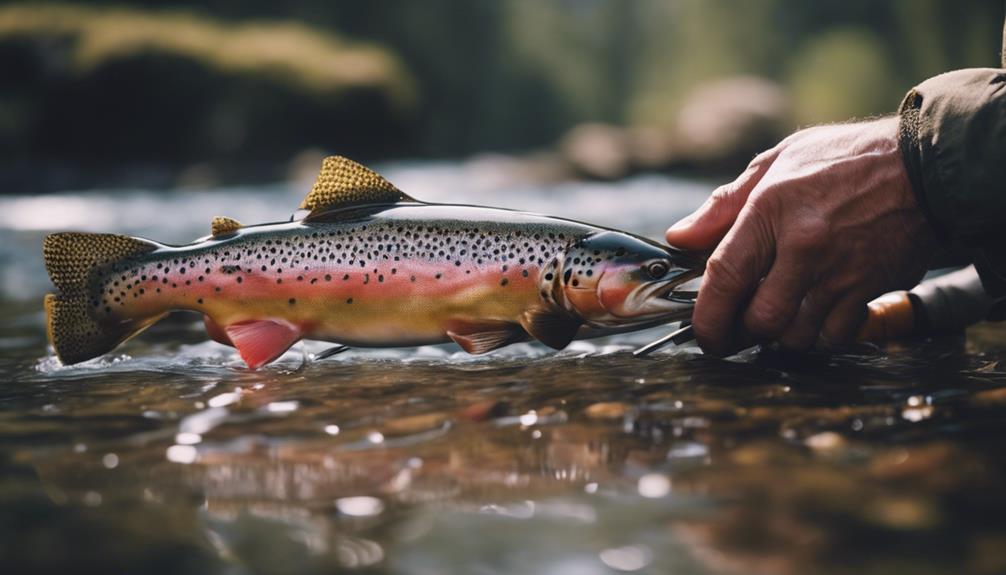
Maintain control and feel every strike by keeping your line tight while hand lining for trout. Adjust the tension as needed based on the lure's depth and speed to make sure a natural presentation and secure hook sets.
Keep a consistent line angle to the water surface for best lure action and to attract trout effectively. Experiment with different hand speeds and movements to make the lure move in a lifelike manner, enticing trout to strike.
Develop a sensitive touch to detect even the slightest bites, allowing you to react quickly and set the hook efficiently. Mastering line control and tension is key to honing your hand lining skills and landing more trout.
Navigating Different Water Conditions
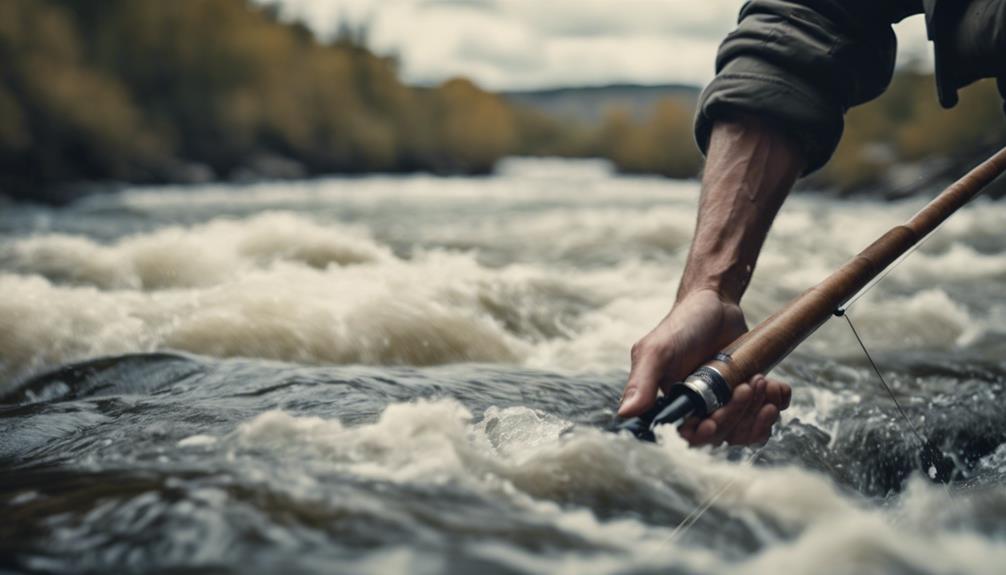
Hey there, ready to tackle different water conditions while hand lining for trout?
Let's talk river versus lake setups, how depth and current speed affect your approach, and how weather and temperature play a role in your fishing success.
Stay tuned for some practical tips to help you adapt to these varying conditions and reel in more trout!
River Vs Lake
When hand lining for trout, the different water conditions of rivers versus lakes require distinct strategies and adjustments. In rivers, trout often hold near structure and eddies, while in lakes, they can be found in deeper waters around drop-offs and weed beds.
To navigate these differences effectively, consider the following tips:
- Target moving water in rivers where trout congregate.
- Explore deeper waters in lakes near drop-offs and structures.
- Adjust line length and sinker weight for varying currents in rivers.
- Use downriggers or sinker releases to control depth in lakes.
- Understand the unique water conditions of rivers and lakes for successful hand lining strategies.
Depth and Current
If you're switching from fishing in rivers to tackling lakes, understanding how depth and current play a role is key for successful trout hand lining. Adjusting the depth of your line is vital as different types of trout prefer different water depths.
By grasping current patterns, you can position your lure accurately since trout often seek shelter from strong currents. In slower currents, look for trout in deeper pools or behind obstacles where they can save energy. When currents are faster, trout tend to be more active, feeding on insects or baitfish being carried downstream.
Adapting to changing water conditions by tweaking your depth and presentation can greatly boost your success when hand lining for trout.
Weather and Temperature
Exploring different water conditions while hand lining for trout involves understanding how weather and temperature influence trout behavior and feeding patterns. When mastering trout hand lining, keep these key points in mind:
- Trout, especially cold-water species, prefer cooler water temperatures.
- They're responsive to weather changes, often becoming more active during overcast days or when a front is moving through.
- Knowing how weather affects water temperatures can help locate trout in various parts of the water column.
- Monitoring water temperature trends can assist in predicting trout movement and feeding habits based on their temperature preferences.
- Adapting fishing techniques and bait presentations according to weather and temperature variations can significantly enhance your success in trout hand lining.
Tips for Catch and Release Practices

So, you've reeled in a beautiful trout – now it's time to release it back into the water.
But wait, have you thought about the best way to do it to safeguard the fish's well-being?
Let's chat about catch and release practices to keep those trout thriving!
Catch Ethics
To guarantee the well-being of the trout you catch, follow these essential catch and release practices:
- Use barbless hooks to maximize harm to the fish.
- Wet your hands before handling the trout to protect their slime coating.
- Avoid excessive handling and keep the trout in the water to reduce stress.
- Use proper tools like hemostats to safely remove hooks.
- Practice revive techniques by gently moving the trout back and forth in the water.
Following these tips ensures you can enjoy the thrill of catching trout while also preserving their health and increasing their chances of survival after release.
Mastering these catch and release practices will make you a responsible angler, contributing to the conservation of trout populations.
Proper Handling
When handling trout for catch and release, always remember to wet your hands to protect their delicate slime layer. This slime layer is vital for their health and protection, so keeping it intact is essential.
Avoid touching the gills or squeezing the fish tightly to prevent harm and stress during release. Opt for barbless hooks or flatten the barbs to make hook removal easier and reduce damage to the fish.
When lifting the trout out of the water, support them gently and horizontally to prevent injury. Prepare your tools and camera in advance to minimize the time the trout spends out of the water, ensuring a quick and safe release back into their natural habitat.
Mastering proper handling techniques will help you become a responsible angler and conservationist.
Conclusion
So there you have it, folks! With these 7 pro tips in your arsenal, you'll be well on your way to mastering trout hand lining like a pro.
Remember to:
- Choose the right bait
- Be patient
- Practice proper technique
- Stay stealthy
- Pay attention to the water
- Adjust your depth
- Most importantly, stay persistent.
Keep honing your skills and enjoying the thrill of reeling in those beautiful trout! Happy fishing!
👨👩👧👦 Dwight’s a married dad of 4 who loves to cast a line 🎣 into both fresh and salt waters. His heart belongs to his family and the sea. 🌊 #FamilyMan #FishingLife #DadOf4 🐟✨

